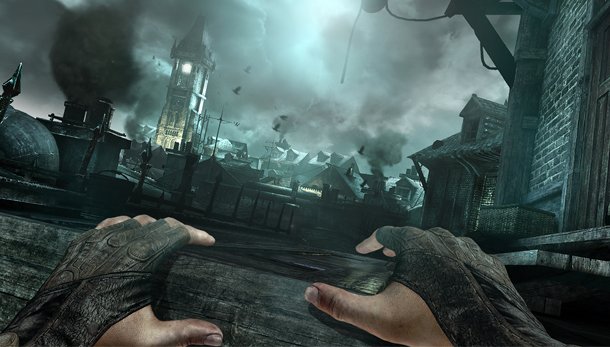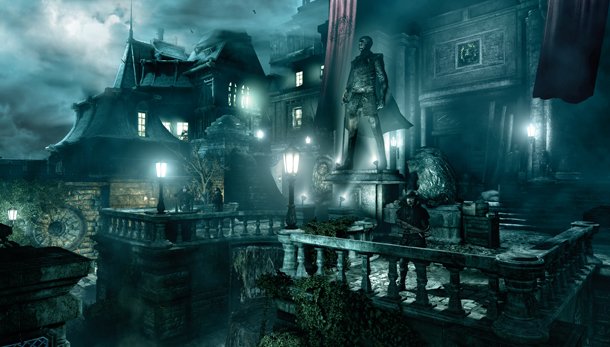Thief hands-on: Eidos Montreal attempt to modernise a stealth classic

This preview was originally published in PC Gamer UK issue 255 .
We won't be able to make everybody happy,” says Daniel Windfeld Schmidt. He's the lead level designer on Eidos Montreal's Thief relaunch, and he's right. I recently played the first-person stealth game, and some people aren't going to be happy.
This Thief game has third- person climbing sections. It makes minor use of quick time events. It has 'Focus mode', which gifts master thief Garrett with limited time-slowing combat abilities. It has context-sensitive controls that mean you can only jump when the game says you can jump.
Unhappy yet? I'm not. After playing the game for over an hour at this year's E3, and putting all my concerns about the above to Schmidt, I've settled on being cautiously optimistic. Thief has changed, but not in the ways that matter.
The mission I played begins in the gardens of a large manor house. The house is situated in The City, Garrett's hometown from the first three games. You've been away for a long time but not much has changed: it's still a gothic, plague-infested hellhole, ruled by the rich and suffered by the poor.

Eidos weren't showing anything of it, but did confirm that The City would act as an openly explorable hub, connecting Garrett's missions, offering side quests and allowing you to commit 'generic burglary' against its inhabitants.
When Garrett arrives at the manor the city outside is rioting, and the house's guards are on high alert. The political machinations of the city concern you only in as much as they provide a distraction during which you can sneak inside and steal a diamond, the Heart of the Lion.
The biggest gaming news, reviews and hardware deals
Keep up to date with the most important stories and the best deals, as picked by the PC Gamer team.
The manor grounds are a mixture of high walls and shadowy grassy areas. I start by clambering on top of the walls – modern stealth games like Dishonored have taught me that the high road is always the safest. I take a few steps and then realise it's a dead end. These walls don't lead anywhere. I decide to try the direct approach instead. I confront the nearest guard, who immediately yells out to his friends. I smack him across the head with my club, and then I'm beaten to death by a crowd.
I try that again, and again, and I die every time. Eventually, I activate Garrett's new Focus ability – a limited supply of magic that highlights key areas in a level, which in combat lets you slow time and target specific body parts. I use it to bash a guard in the leg, knocking him to his knees, and complete the manoeuvre with a lethal finishing move. Then another guard who heard the ruckus kills me anyway.

“It's not a game about fighting,” says Schmidt. “Fighting is a fallback, but for us Thief is about stealing, it's about stealth.” If you want to kill someone, you need to isolate them from their companions and do it quietly and quickly. Chalk this up as one for the optimistic column: Thief is still Thief, and a decade of new stealth games haven't caused it to stray from its shadowy path.
I eventually slip past the guards unseen, and reach a small room underneath a garden fountain, with water flowing down from an upper level. I turn a valve and shut the fountain off. The upside is I can now avoid the path by climbing over ledges and towards the house. The downside is that the water was masking my footsteps.
“I think audio is a really big part for us, like the original. Surfaces have different properties: run on grass, you're not going to make a lot of sound, but if you run in water you're going to splash more,” says Daniel. When I play, I'm mostly conscious of whether I'm in shadow or not – an indicator in the bottom left of the UI lets you know if you're in light, partial light or complete shade. I push Daniel on how much sound really matters in the game.

